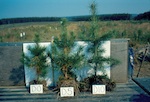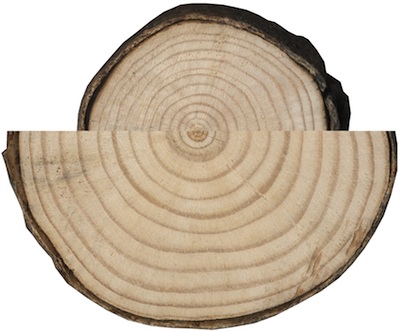
No fiction in this pulp
April 17, 2012
By D. Degenhardt B. Drozdowski and R. Faught
 Apr. 17, 2012 - Mechanical pulp sludge was once thought of as a waste product, but thanks to 20 years of research it has re-invented itself as a “super fertilizer.”
Apr. 17, 2012 - Mechanical pulp sludge was once thought of as a waste product, but thanks to 20 years of research it has re-invented itself as a “super fertilizer.”
Apr. 17, 2012 – Mechanical pulp sludge was once thought of as a waste product from the mechanical pulping process in the pulp and paper industry destined for incineration and landfilling, but now thanks to the 20 years of research in its utilization on both agricultural and forest soils in Alberta, mechanical pulp sludge has re-invented itself as a “super fertilizer.”
This work was first initiated in 1992 under the collaboration of the Alberta Research Council (now part of Alberta Innovates – Technology Futures), Alberta Newsprint Company (ANC), Millar Western Forest Products, and Slave Lake Pulp (SLP). The goal of the research program was to provide the provincial government and industry with information on the benefits of mechanical pulp sludge application on agricultural and forest land and also some background information for adopting operational land application guidelines.
Mechanical pulp sludge is a by-product of the pulping process, but also happens to be an excellent source of organic matter composed of short lignin fibers, high in carbon (45%) and containing plant nutrients such as nitrogen and phosphorus (total Nitrogen content ranges from 1.5 to 3.0%, while total Phosphorus ranges from 0.3 to 0.5%). The sludge also has a neutral pH and an electrical conductivity of approximately 2.2.

|
|
| Tree cookie comparison between the control and sludge treatment 10 years post-sludge application. Advertisement
|
The first experiment conducted through the Mechanical Pulp and Paper Consortium was a landspreading field trial involving forest cut-block field locations to determine the impact of different application rates of mechanical pulp sludge on soils and trees. Subsequent trials involved sludge application on juvenile trees, seedling/sucker trials, spreading without incorporation on various slope and aspect positions, sludge application on both frozen and snow covered soils, operational spreading trials and more. Growth response of the different treatments were evaluated using several techniques including height and diameter comparison, as well as projections, survival rates and the age-shift method – which quantifies how much sooner a particular size is reached due to treatment effect, and growth multipliers – which represent the treatment effect as the ratio of treated to untreated.
The results from these long-term experiments indicate that sludge application in the forest had an overwhelmingly positive effect on tree volume (Figure 1), with the largest projected gain in stemwood volume on balsam poplar and aspen species at age 25. The greatest benefit comes from applying sludge in marginal soils to stimulate tree growth, and juvenile trees are the best candidates for sludge application as they are able to achieve more volume production than seedlings (Figure 2). Sludge application rate will vary depending on the properties of the sludge and characteristics of the site and the receiving soil, but results suggest that the sludge application rate should be at 50 tonne of dry sludge/ha or less to reduce herbaceous competition.
Generally, there was a slight increase in EC, SAR, nitrate, nitrite and metal (Cu, Ni, and Zn) concentrations initially after sludge application, but it has no effect on soil suitability ratings and is not long lasting. The value of pulp sludge will continue to grow as the industry looks for other potential uses for what was once thought of as “waste” product.
For more information on mechanical pulp sludge research please go to www.SmartSludge.com.
Print this page